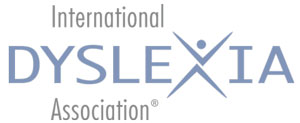March 2013
By Mary Wennersten, M.Ed.
What is the single most important year of an individual’s academic career? The answer is not junior year of high school, or senior year of college. It is third grade. What makes success in third grade so pivotal? It is the year that students move from learning to read—decoding words using their knowledge of the alphabet—to reading to learn. The books children are expected to master no longer are simple primers, but fact-filled informational texts.
Children who have not developed fast, fluent reading skills begin to fall behind, and for most of them, the gap will continue to grow. So third grade constitutes a critical transition—a “pivot point,” says Donald J. Hernandez, a professor of sociology at Hunter College. Hernandez conducted and released a study last year called “Double Jeopardy: How Third-Grade Reading Skills and Poverty Influence High School Graduation.” This study found that third graders who lack proficiency in reading are four times more likely to become high school dropouts.
All too often we hear stories of students who struggle through to third grade and find themselves the following year in the “fourth grade slump,” as the focus for instruction changes from “learning to read literary and informational text” to “reading to learn content.” While the more skilled readers in the class learn knowledge and new words from context, poor readers, out of frustration, begin to avoid reading. A vicious cycle sets in: School assignments increasingly require background knowledge and familiarity with academic words and domain-specific words (literary, abstract, and technical words)—competencies that are themselves acquired through reading. Meanwhile, content classes like science, social studies, and math, rely more on textual analysis, so that struggling readers begin to fall behind in these subjects, as well. In this way, they fall further and further behind in school, dropping out at a much higher rate than their peers.
This phenomenon is what Keith Stanovich calls the “Matthew Effect”—slow reading acquisition has cognitive, behavioral, and motivational consequences that slow the development of other cognitive skills and inhibit performance on many academic tasks. In short, as reading develops, other cognitive processes linked to it track the level of reading skill. Knowledge bases that are in reciprocal relationships with reading also are inhibited from further development. The longer this developmental sequence is allowed to continue, the more generalized the deficits will become, seeping into more and more areas of cognition and behavior. Or to put it more simply—and sadly—in the words of a tearful nine-year-old already falling frustratingly behind his peers in reading progress, “Reading affects everything you do” (Adams, 1990, pp. 59–60).
The Campaign for grade-level reading is sweeping across the country, bringing about a collaborative effort by foundations, nonprofit partners, states, and communities to increase the percentage of children who can read proficiently. In the report, “Early Warning! Why Reading by the end of Third Grade Matters,” by the Annie E. Casey Foundation, Leila Fiester emphasizes the role that reading proficiency plays in determining outcomes of children, families, communities, and the nation. She states, that in an increasingly global and technical economy, US employers struggle to find enough educated, competent, and accountable workers—“The bottom line is that if we don’t get dramatically more children on track as proficient readers, the U.S. will lose a growing and essential proportion of its human capital to poverty, and the price will be paid not only by individual children and families but by the entire country.”
The Education Commission of the States (ECS) recently released a summary on state third-grade reading policies. Currently, 13 states have passed legislation aimed at improving early literacy outcomes that include three elements:
- Early identification of reading difficulties
- Interventions that occur as close to the point of need as possible
- Retention
Arizona is one of the states that passed third-grade retention legislation in May, 2010 called “Move on When Reading.” A.R.S. §15-701 requires that a pupil not be promoted from the third grade if the pupil obtains a score on the reading portion of the Arizona Instrument to Measure Standards test, (AIMS) (or a successor test) demonstrating that the pupil’s reading falls far below the third grade level. During the 2012-13 school year, each public school in Arizona developed a comprehensive reading plan to ensure that their K-3 students become successful readers, submitted reading assessment data three times during the year, and received additional funding to support the implementation of their K-3 Literacy plans.
Their plans included the following information:
- Literacy Coordinator and Literacy Leadership Team
- Tier 1 Core Reading Program (for K-3 and ELL classrooms) with a master reading block schedule
- Tier 2 and 3 Intervention Program (including supplemental and intensive programs, frequency and duration)
- Assessment System (universal, diagnostic, progress monitoring, and summative)
- Professional Development for K-3 teachers (common core, content knowledge, intervention, or assessment and data analysis)
- Parent/Guardian Communication
These literacy plans help Arizona K-3 educators to develop a “prevention” model. It all starts with the assessment system. In grades K-2, the summative reading goal is measured by universal screening and progress-monitoring measures of essential elements of reading (phonological awareness, letter naming, phonemic awareness-segmenting and blending, listening comprehension, etc.). Because the developmental foundations for reading occur in grades K-3, and the AIMS Reading is not administered prior to grade 3, universal screening and progress monitoring in grades K-2 takes on special significance. Universal screening is used at the beginning of the year to identify K-2 students who are at risk for reading deficiencies. It then is administered two more times each year to determine if the student is making adequate growth in specific skills. Progress monitoring indicates whether students are on track to read at grade level or higher in grade 3 and provides critical information to guide instruction. In grade 3, the summative reading goal is measured by AIMS or Partnership for Assessment of Readiness for College and Careers (PARCC) in 2014-15.
Another essential part of the “prevention” model is effective instruction for all students. The Arizona Department of Education (ADE) K-3 Literacy section is working with the Early Childhood, Office of English Language Acquisition Services, and Exceptional Students Services, to provide literacy training (Reading Foundations) for K to 3rd-grade educators in Arizona. This training includes a focus on the critical components that the National Reading Panel recommends and the Arizona Common Core standards require for all K-3 students (listening & speaking, language, comprehending literary and informational text and foundational skills). The Department of Education also is working with other groups to create a summer reading program to address summer reading loss.
While retention policies are receiving a lot of attention due to a push to improve 3rd-grade reading, early identification and intervention are more likely to improve student performance. What we have learned from states like New York and Florida is to not just repeat the same 3rd-grade curriculum; we have to do something different. Schools must develop early identification systems and target struggling readers for intervention. The interventions need to be grounded in a theoretical framework for how reading skills are acquired, based on neuroscience findings, and evidence from effective education programs. Interventions need to address the five components of the reading process, explicitly instruct students in the structure of language, provide opportunity to practice, and monitor students frequently.
Teachers also need professional development in the areas of differentiated instruction, formative assessment, and data analysis. Some may need training in the fundamentals of literacy instruction (oral language, listening comprehension, phonological awareness, word study, vocabulary, fluency, or comprehension of literary and informational text).
Only when all of these components are in place, will third grade retention legislation achieve its lofty goals of evaluating the progress of all children starting in kindergarten and ensuring their success long into the future by building a strong foundation for future learning.
Hernandez, D.J. (2012). Double Jeopardy: How Third-Grade Reading Skills and Poverty Influence High School Graduation. Baltimore: The Annie E. Casey Foundation.
Adams, Marilyn J. (1990). Beginning to Read: Thinking and Learning about Print. Cambridge, MA: MIT Press.
Fiester, L. (2010). Early Warning! Why Reading by the End of Third Grade Matters. A KIDS COUNT Special Report.Baltimore: The Annie E. Casey Foundation, p.7.
Third Grade Literacy Policies: Identification, Intervention, Retention. The Education Commission of the States, March 2012 http://www.ecs.org
Arizona Department of Education, K-12 Standards – Move on When Reading http://www.azed.gov/mowr/
Mary Wennersten, M.Ed., is currently a Member-at-Large on the Board of Directors of IDA. As an IDA Board member, Mary has been very involved with Branch development. She is the past-president of the AZ IDA. Mary is currently working for the Arizona Department of Education in the High Academic Standards for Students division. She is currently the K-3 Literacy Director and supports educators in the implementation of the Arizona English Language Arts Common Core Standards, provides professional development in assessment, instruction, intervention, and data analysis, and assists in providing resources and technical assistance to LEA’s and charter schools in Arizona. Because of her own experience as a struggling student with dyslexia, and having a child with dyslexia, Mary has spent her career in public education improving instruction for all students.
Copyright © 2013 International Dyslexia Association (IDA). We encourage sharing of Examiner articles. If portions are cited, please make appropriate reference. Articles may not be reprinted for the purpose of resale. Permission to republish this article is available from info@interdys.org.

